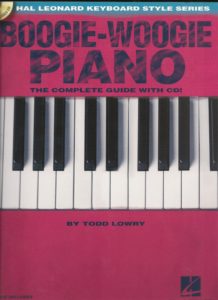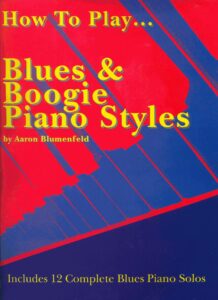Table of Contents

Barrelhouse And Boogie Piano by Eric Kriss
Before the juke box, radio and television, the wandering musician provided much of America’s entertainment. He spread the news, the fashions and the jokes. An aura of mystery surrounded him.
In black communities, this tradition was especially powerful and every Saturday night folks crowded into honky tonks, bars and barrelhouses to hear a new sound. This was the world of the blues piano player: sitting in a corner all night, pounding out stomps, low-down blues, fast boogies, drinking beer, shouting and having a whopping good time. It was a fast scene and the life expectancy wasn’t too long, but thousands of men chose to leave family and job behind to follow the rough lumber camps, haunt roadside barrelhouses or drift through dusty, obscure hamlets in search of an audience. This book is about the music these musicians created.
Best Sheet Music download from our Library.
In the hundred years since the birth of piano blues, many styles have come and gone, with only a few permanently etched on record. Some piano players like Roosevelt Sykes and Memphis Slim have received well-deserved recognition, but most of the wandering blues pianists have vanished, leaving behind only a scratchy 78 or two and their colorful names: Kid Stormy Weather, Black Boy Shine, Barrelhouse Welch, Drive ‘Em Down, Toothpick, Big Jug, No Leg Kenny, Trigger Sam, Game Kid, Burnt Face; the list goes on and on.
The twenty-two pianists I have chosen represent a broad spectrum, from the bawdy entertainer to the introspective soloist. The pieces were selected for originality, virtuosity and availability; it seemed senseless to discuss music that was never recorded or a musician whose records remain unissued. I have also excluded the pianists described in my first book, Six Blues-Roots Pianists. These influential musicians deserve careful study: Jimmy Yancey, Champion Jack Dupree, Little Brother Montgomery, Speckled Red, Roosevelt Sykes and Otis Spann. I suggest that Six Blues-Roots Pianists be used as a companion book with this one.
Barrelhouse And Boogie Piano contains several valuable learning aids: the 12-minute record of selected piano blues excerpts; the Appendix of barrelhouse and boogie piano bass lines; a section of exercises; and a piano blues discography and bibliography.
The enclosed record is especially useful as an introduction to blues piano styles-the phrasing, syncopation and intensity of the music can really be understood only after repeated listening. The complete recordings, however, should be consulted whenever possible, for the short excerpts do have a limited scope. The discography has a complete list of all the recordings mentioned in the text (as well as other suggested albums) and the appendix of record company addresses should facilitate the task of locating these elusive releases.

The exercises concentrate on many of the unique problems of blues piano: the coordination of the right hand with a boogie bass; the fingering of blues grace notes and runs; and the rough touch but steady control of barrelhouse style. The appendix of bass lines, aside from being a reference guide to blues piano styles, provides a point of departure for extending melodic phrases into complete blues compositions.
Finally a word about the twenty-two transcriptions. Every attempt has been made to faithfully duplicate the original music on record within the limited boundaries of musical notation. Some of the rhythms and phrases are so idiosyncratic that a precise transcription would be hopelessly complicated. Accordingly, I have tried to find the right balance between accuracy and practicality. The transcriptions are intended only as guides to playing piano blues and the original recordings must be religiously consulted to master the nuances and complexities of this rich piano tradition.
Please, subscribe to our Library.
If you are already a subscriber, please, check our NEW SCORES’ page every month for new sheet music. THANK YOU!
Barrelhouse Boogie Albert Ammons
Contents List Download:

Browse in the Library:
Or browse in the categories menus & download the Library Catalog PDF:
